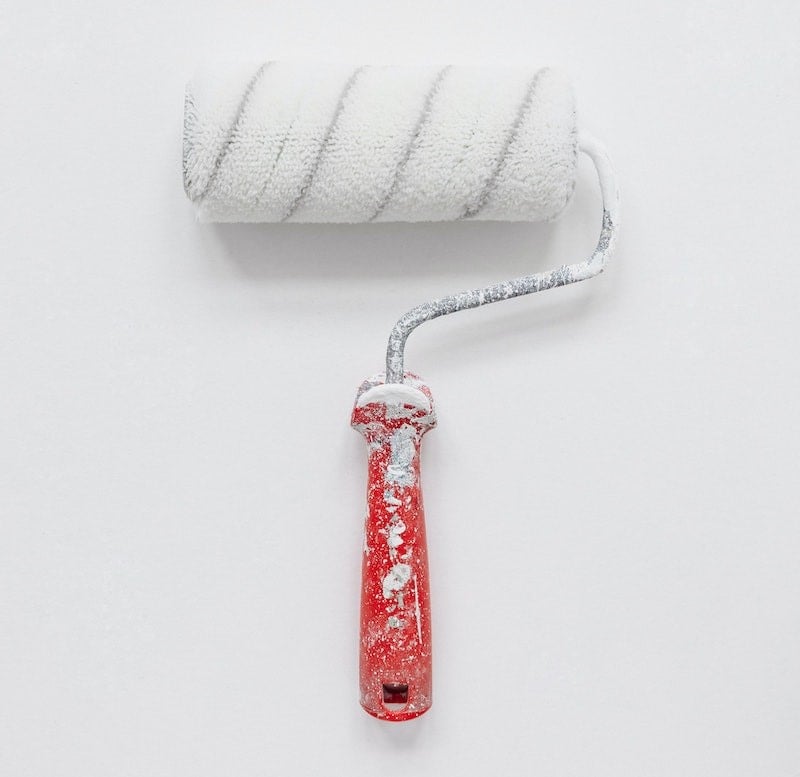What makes a high-quality exterior paint job? 5 steps and best practices

When looking to have any improvements professionally made to your home, you want to know you’re going to receive the best possible outcome.
Though having your exterior painted might not seem as serious as having all your windows replaced, it is still an investment.
It’s no secret that what you get is what you pay for when hiring a contractor for your project. Therefore, having realistic expectations is essential.
If you’re looking for a high-quality paint job, you’re going to pay a little more for a quality contractor, product, and application.
So, how do you know you are going to get a high-quality exterior repaint?
Southwest Exteriors has been a home improvement contractor in San Antonio for over 30 years now. We specialize in siding replacements and exterior painting, meaning we can take care of any problem you may have.
We know how important attention to detail is and want to educate you on the best practices for an exterior painting project.
This article will outline the entire process of an exterior repaint and the steps that differentiate a high-quality versus low-quality painting project, and how to choose the right contractor.
This will equip you with the information you need to know what you should get out of your exterior paint project.
What makes a high-quality exterior repaint?
Knowing what the best practices are for a high-quality exterior paint job helps you to choose a high-quality contractor.
Along with the steps in the process, knowing what quality products should be used is also important.
This section will outline five steps in the painting process, specify what a quality contractor will do, and point out the problems that occur if these practices are not followed.
1. Repairing any damage on the siding
The first step to preparing the exterior to be painted is to repair or replace any damaged areas. Before any repair begins, protective tarps should be placed around the home’s perimeter and cover nearby shrubbery to protect it from debris and paint.
If there is any small amount of rot in the trim, soffit, fascia, or siding, a high-quality contractor should be prepared to repair and replace any boards.
However, if severe rotting goes beneath the surface, a carpenter may need to be called to repair the damage.
Any cracking or splitting in other types of siding, like stucco, should also be easily repairable by your painting contractor.
Suppose a contractor is not able to repair small amounts of damage or replace any exterior parts. In that case, you will have to work with a separate contractor that specializes in siding repair.
When you have to deal with multiple contractors for one project, it is more difficult to thoroughly choose the one you can trust. In addition, the more contractors you have to deal with, there is more room for mistakes and misunderstandings.
Choosing a contractor for your paint job who is an expert in replacing or repairing exteriors is the best way to combat this.
2. Washing the exterior
Before any primer and paint can go down, the siding must be properly prepared and cleaned.
The best practice to clean the exterior is to power wash the siding and trim areas. The high-pressured water will eliminate the dirt, pollen, and other grime that builds up on the siding.
This ensures that the siding is clean and smooth before it’s time to prime to allow for the evenest application.
If a regular garden hose is used to wash the siding, it will not get all of that buildup off. This means that when your paint goes down, it will come out textured on the siding.
Similarly, if the siding is not washed, the paint application will not turn out as it should.
3. Caulking all seams and gaps
Once any repairs have been made and the exterior is power washed, all seams and joints must be caulked.
Any seam or joint refers to where two boards, whether two siding boards or a siding to trim board, come together.
These areas should be caulked when siding is installed but must be recaulked and smoothed before painting. This ensures water cannot infiltrate through the small cracks.
If the seams are not properly caulked, then your siding will be more susceptible to rot and insect infestation.
Any nail holes should also be filled with spackle, which is like caulk, smoothed, and sanded before applying primer. This ensures the paint will be applied as smoothly as possible for the best results.
The caulk should have a 45-year lifespan at least. Anything less than this will not last on your exterior.
4. Applying the primer
Now that the exterior has been properly prepped, first, a primer must be applied.
A primer creates an even base before the topcoat is applied. This means you do not need as many topcoats to reach the true color of the paint.
All window and door openings and nearby fixtures should be covered with a protective wrap to protect them from paint.
The primer should be applied using a sprayer for the majority of the siding. This allows for the most even amount of coverage. Small rollers and brushes are best around trim, soffit, fascia, and other small areas.
If the entire siding were painted using a roller, it might turn out uneven because when a roller is moving back and forth, it disperses paint on the way up and picks it back up on the way back.
While using a roller is not necessarily a bad practice, using a sprayer allows for the most even amount of coverage.
Most primers must sit overnight to dry completely before the topcoat is applied.
5. Applying the topcoat
The topcoat is the final step to your new exterior paint project. Like with the primer, the best practice is to apply the topcoat with a sprayer on most of the siding and use small rollers and brushes for the trim.
A high-quality, durable exterior paint should be used for a long-lasting paint job. Sherwin-Williams Duration, Sherwin-Williams Emerald, and Valspar Duramax are some of the top-rated exterior paints for all siding as well as specifically wood, brick, and stucco.
If cheap paint is used for the topcoat or primer, the paint is not going to last and will likely fade, crack, blister, and peel within just a few years.
Some contractors will water down their paint to save money. Watery paint is a sure sign that you are getting a quality paint job, and it will not last. However, adding the smallest amount of water to paint in a sprayer can help with the application without watering down the paint.
Once the topcoat is dry, your new exterior is finished.
Choosing a high-quality painting contractor
Before committing to your project, you want to know you can trust the contractor you choose to deliver the quality of job you want.
During consultations, ask specific questions about their painting process and what types of products they use. A great contractor will tell you this information before you even have to ask.
Knowing what is included in the warranty they offer is another important aspect of your project. This is different from the actual product warranty.
Most paint companies have a 10-year warranty on their paint that protects against cracking, peeling, and blistering.
Overall, when choosing a contractor for your exterior repaint, you must be realistic in your expectations. If you are looking for a less expensive and quick option, you cannot expect the highest quality outcome.
Though it does cost more for a high-quality paint job, it will save you time and money in the future if you are a long-term homeowner.
Signs of a bad exterior paint job
Here are some signs that your exterior paint job may be bad:
-
Peeling or flaking paint: If you notice that the paint is peeling or flaking off in certain areas, it may be a sign of poor surface preparation or low-quality paint.
-
Fading or discoloration: If the paint has faded or changed color significantly since it was applied, it may be a sign that the paint was not applied evenly or that the wrong type of paint was used.
-
Blistering or bubbling: If you notice small bubbles or blisters on the surface of the paint, it may be a sign of moisture problems, such as water getting behind the paint.
-
Chalking: If you see a white, powdery substance on the surface of the paint, it may be a sign of chalking, which is a breakdown of the paint due to exposure to the sun.
-
Uneven coverage: If the paint appears to be applied unevenly, with some areas thicker or thinner than others, it may be a sign of poor workmanship or inadequate preparation of the surface.
-
Cracking: If you see cracks in the paint, it may be a sign of the paint shrinking or expanding due to changes in temperature or humidity.
If you notice any of these signs, it may be a good idea to have a professional inspect the paint job and determine if it needs to be redone or repaired. In general, a good exterior paint job should be even, durable, and able to withstand the elements for several years.
Is a two-tone exterior paint job more expensive?
A two-tone exterior paint job can be more expensive than a single color paint job, depending on the specific details of the job. The cost will depend on a variety of factors, including the size of the home, the number of colors used, the complexity of the design, and the type of paint used.
Here are some reasons why a two-tone exterior paint job can be more expensive:
-
More time and labor: A two-tone exterior paint job requires more time and labor than a single color paint job. This is because the painters will need to carefully mask and tape off the different areas that will be painted different colors.
-
More materials: A two-tone exterior paint job may require more paint and other materials, such as tape and masking paper, than a single color paint job.
-
Design complexity: If the design of the two-tone paint job is complex, with multiple colors and intricate patterns, it will require more skill and experience from the painters, which can increase the cost.
However, it's important to note that every painting job is different, and the cost of a two-tone exterior paint job will depend on the specific details of the project. It's a good idea to get a detailed quote from a professional painting contractor before deciding on a paint job.
Ensuring a high-quality exterior repaint
Now that you know the steps, best practices, and products that make a high-quality paint job, you can choose the right contractor for you.
Researching contractors, painting processes, and asking questions is your best defense mechanism against a possible blindside. The last thing you want is to pay for a high-quality exterior repaint only to receive a low-quality outcome.
At Southwest Exteriors, our goal is to provide you with the highest quality professional products and services. We have been a San Antonio home remodeling contractor since 1989, so we’ve seen plenty of poor paint jobs.
Whether you choose to work with Southwest Exteriors or not for your exterior repaint, we want you to be educated and well-equipped with all the information you need to choose the right contractor and get the best result from your project.
Want to know how much an exterior paint project costs? Check out this article that outlines the top five factors that influence the cost, such as square footage, condition of siding, and contractor quality.